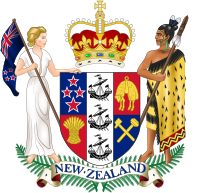
Photo from wikipedia
Abstract In this paper we outline how geomorphological understanding has underpinned forest management in New Zealand's erodible steeplands, where it contributes to current forest management, and suggest where it will… Click to show full abstract
Abstract In this paper we outline how geomorphological understanding has underpinned forest management in New Zealand's erodible steeplands, where it contributes to current forest management, and suggest where it will be of value in the future. We focus on the highly erodible soft-rock hill country of the East Coast region of North Island, but cover other parts of New Zealand where appropriate. We conclude that forestry will continue to make a significant contribution to New Zealand's economy, but several issues need to be addressed. The most pressing concerns are the incidence of post-harvest, storm-initiated landslides and debris flows arising from steepland forests following timber harvesting. There are three areas where geomorphological information and understanding are required to support the forest industry — development of an improved national erosion susceptibility classification to support a new national standard for plantation forestry; terrain analysis to support improved hazard and risk assessment at detailed operational scales; and understanding of post-harvest shallow landslide-debris flows, including their prediction and management.
Journal Title: Geomorphology
Year Published: 2017
Link to full text (if available)
Share on Social Media: Sign Up to like & get
recommendations!